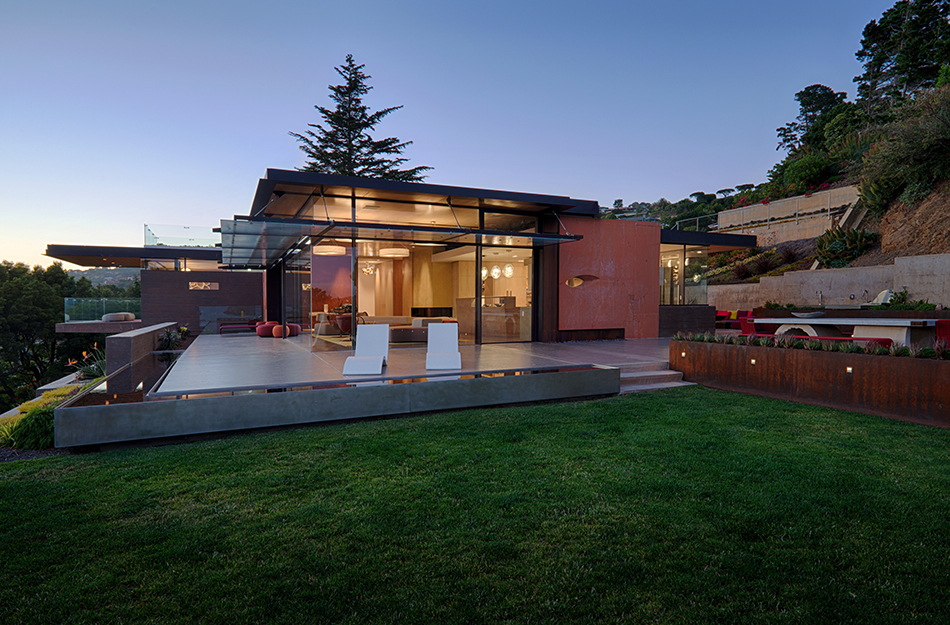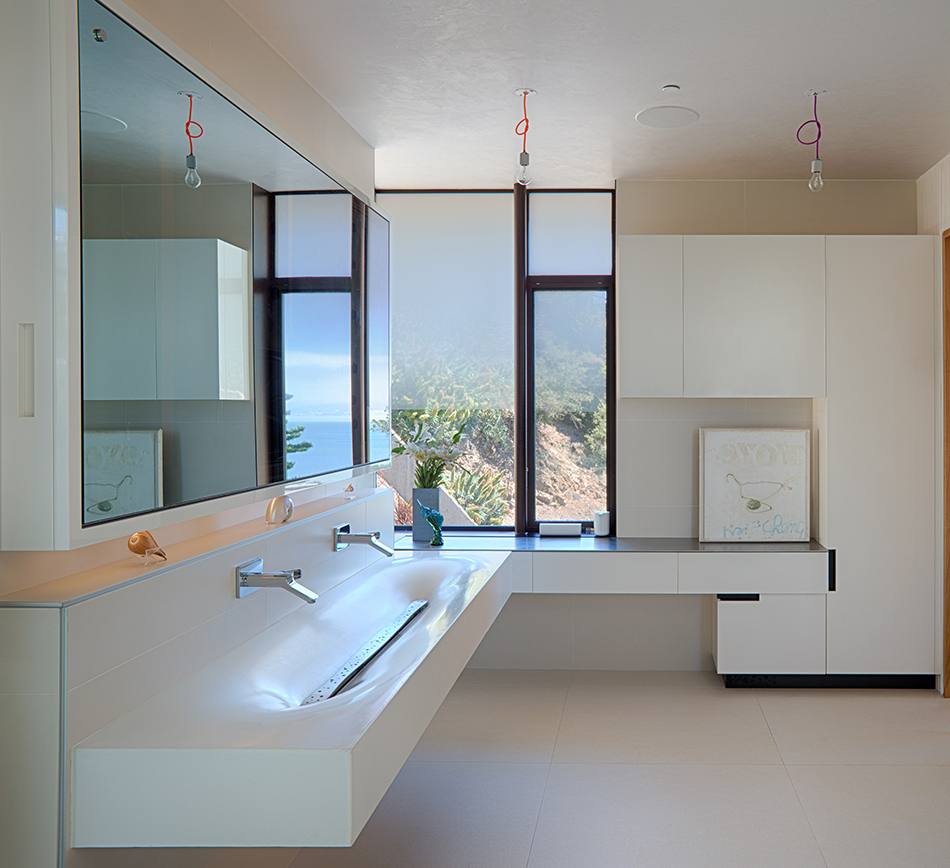Palm Springs has been called “God’s waiting room,” and George Wharton James, its first historian, said in Palm Springs, “it is easy to forget the activity of American life, and all association with the occidental world, and imagine oneself in the heart of the Sahara.” It was to this desert retreat, one hundred miles east from Los Angeles, that visionary Modernist architects like Frank Lloyd Wright, Rudolph Schindler and Richard Neutra came to build a monument in the desert. The structures they built — Neutra’s Kaufmann Desert House, Twin Palms by E Stuart Williams — came to define a new form in American architecture: Desert Modernism. These structures were characterized by slatted metal walls creating shaded breezeways, flat roofs, muted exterior colors, large expanses of glazing, and shaded outdoor spaces. Like other Modernist styles, Desert Modernism is an architecture that seeks to connect inside and outside, indoor and outdoor, the fabricated human world with the natural, organic world. Neutra’s goal, which became the cornerstone of the aesthetic, was to make homes not only memorable but also allowed its owner to “endure its comforts.”
A new wave of Desert Modernists has emerged in Arizona. These architects trace evolutionary roots from Frank Lloyd Wright at Taliesin West in Scottsdale and Paolo Soleri at Cosanti and Arcosanti. Soleri sculpted striking structural edifices by carving into built up domes of compacted earth and sand and then casting concrete with rebar into the negative carved reliefs. He perfected his techniques for years at his modest studio compound. As his renown grew, generations of architectural students and apprentices, from the early 1960’s to 2010 and beyond, continually migrated to volunteer, live and work on site with him (until his passing in 2013) to help realize his dream of an immense Utopian city — Arcosanti. Ideas developed at his Cosanti studio germinated from small structures to a Piranesian scale. Arcosanti is the visionary equivalent of Antonio Gaudi’s Barcelona Sagrada Familia Cathedral. Prescient with environmentally sound ideas based on organic growth and Slow Movement philosophy, it was designed to take ten lifetimes to finish. He was as content to carve a sand-cast ceramic wind-bell chime, as to draft master plan details for his futuristic city. Scale didn’t matter to him.
Will Bruder, a sculptor in his college days and self-made architect in Phoenix by the late 70’s (who has since moved to Portland, Ore. in 2015) studied with Paolo Soleri and was profoundly moved by his down-to-earth, sand cast concrete art environmental studio. In the early 90’s He famously designed and successfully shepherded the building of the iconic Phoenix Public library on a shoestring budget with all the savvy and desert ethos of living sparsely off the land. He, in turn, nurtured, apprenticed and influenced the growth of architects Wendell Burnette and Rick Joy, among others, who have made names for themselves in this casual cactus lineage with generous use of rammed earth, rusted plate steel and minimalist aesthetic.
I had a late start in my design career. In my forties, I was introduced to architect Will Bruder by a friend. I decided to travel to his remote desert outpost studio and show him my modest designs — a kitchen remodel or two, my own super humble little house with concrete counters that I had cast, and some design sketches. I was touched by how welcome he made me feel and how generous he was with his time. We were the same age. He patiently perused my work and poignantly encouraged me to continue, even though I was not an architecture student and all I had accomplished up to that time would have occupied one sheet of his architectural plans.
Over the next two decades, I kept in touch with him and made my acquaintances with the younger Wendell and Rick, and I watched all of their work blossom as I made slow but steady gains on my own design path. I realized that no one should predicate their own success on the timing of others’ successes. Their rising careers, like the proverbial boats rising with the tide, only make it easier for you to float upward and join them. I’ll fondly remember the day Will took me to meet Paolo Soleri at his Cosanti studio on a scorching afternoon in Phoenix. He came out of his house to greet us in shorts and sandals, tanned, wiry, with a bemused smile holding a small foam carving in leathery hands. He had been watching his favorite soap opera and working on his thousandth bell chime simultaneously. From a brief handshake I appreciated more than just the brilliance embodied in his work. I was struck by the casual humility of his leisure moments. He was content, focused, buoyant — and obviously enjoyed each day as it came. It won’t be too many years before I will be the same age as Paolo was that day. I look forward to the timeless, detached bemusement that evolves from the relaxed intensity of doing what you love no matter the size or the scale of it.


